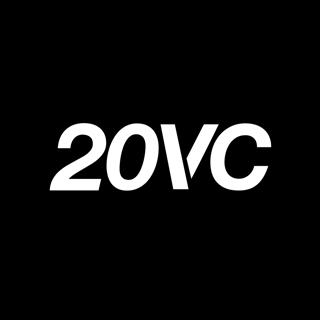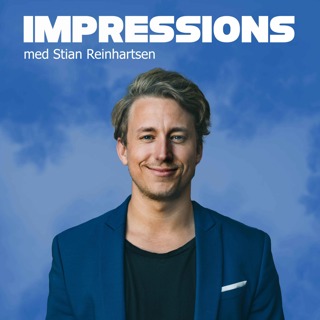
20VC: Tiger Global Saved by OpenAI | Coatue's New Fund: Hype or Substance | Why SBF is the Greatest Investor of the Last 5 Years | Why Big Funds are Investing in Perplexity
Items Mentioned in Today's Episode: 04:11 Owner's New $120M Round at $1BN 06:05 Why Series A is F****** Today 14:55 Could Tiger Global Be Saved by OpenAI and Scale 22:43 Why SBF is the Greatest Investor of the Last Decade 31:34 Why No Individuals Should Invest in Venture Funds 36:27 Why Microsoft Laying 3% of Their Workforce Off is not Enough 41:38 OpenAI's New CEO: Non-Technical CEOs Running OpenAI 44:48 Why Big Funds are Investing in Perplexity 54:43 Why Clay Should Raise a Warchest and Go to War 01:00:05 The Impact of AI on Marketing and Sales
15 Mai 1h 14min

20VC Exclusive: Mercury Founder Launches First $26M Fund | Why Founders Should Take the Highest Price | Why Serial Entrepreneurs are Better | Why AI Is So Overhyped | The Future of Venture Capital with Immad Akhund
Immad Akhund is the CEO of Mercury. Launched in 2019, Mercury has raised $500M in funding from Sequoia, Coatue, CRV, Andreessen Horowitz and others. He is a former part-time partner at Y Combinator and is an active angel investor, with more than 350 investments in startups including Rippling, AirTable, Rappi, Applied Intuition, and Substack. In Today's Episode We Discuss: 04:38 Exclusive News: New Fund Announcement 05:15 Lessons from 350 Angel Investments 12:27 Why Founders Should Always Push for the Highest Price 14:40 Biggest Wins and Misses in Angel Investing 22:56 How Sequoia Came to Lead the Series C for Mercury 31:32 Why Move From Angel to VC 33:41 Is It Wrong For Founders to Also Have Funds with LP Capital? 36:28 AI Investments: Overhyped or Worthwhile? 41:14 Raising a First Time Fund: Challenges & Surprises 49:47 The Future of Venture Capital 54:36 Quickfire Questions and Reflections
12 Mai 1h 2min

20VC: Four Traits of the Most Successful Founders | How to Hunt and Close Talent Like a Pro and Where All Founders Go Wrong | Lessons Raising $397M From the Best Investors in the World with Eléonore Crespo @ Pigment
Eléonore Crespo is the Co-Founder and CEO @ Pigment, one of Europe's fastest-growing companies. With Pigment, Eleonore has raised over $397M from the best in the world including ICONIQ, Greenoaks and IVP to name a few. Prior to Pigment, Eléonore was on the other side of the table as an investor with Index Ventures. In Today's Episode We Discuss: [04:10] "I had 3 surgeries. That's when I knew I had to become a founder." [06:50] Why Index Ventures isn't on her cap table [08:40] Eleonore's CIA-style co-founder hunt (she literally made a target list) [11:50] Co-CEOs: "We talk 3x a day. That's our superpower." [13:30] The boutique coffee metaphor for product excellence [15:40] Yuri Milner's 4 traits of legendary founders (one is shocking) [17:30] "Hiring is everything. I hunt talent like a football scout." [19:00] Wild Olympic Games story → led to hiring a top CFO [24:50] How she filters out title-chasers and political hires [29:30] "Too much process? I make teams list the dumbest ones." [33:00] Her blunt answer on whether Europe can produce scale execs [35:00] Why she raised so much money… even when they didn't need it [38:50] Board power is real: "They can fire you. I've seen it." [43:30] Rob Ward's counter-cyclical advice: double down during a downturn [44:50] "We closed a massive US deal… at 2am… while drenched in rain." [47:10] Selling into the US as a European founder—her full playbook [50:20] The hardest part of being a CEO no one talks about [54:00] "Children remind you what happiness is." [56:30] "I don't fast. That would make me unhappy." On longevity culture [59:20] Why her husband knows nothing about Pigment [01:04:20] "Forget $50B. I want to build a $200B company." Follow Eleonore Crespo LinkedIn: Eleonore Crespo Pigment: pigment.com Subscribe to 20VC for more conversations with the world's best founders and investors. Please read the offering circular and related risks at invest.modemobile.com. This is a paid advertisement for Mode Mobile's Regulation A+ Offering. Past performance is no guarantee of future results. Investing in private company securities is not suitable for all investors because it is highly speculative and involves a high degree of risk. It should only be considered a long-term investment. You must be prepared to withstand a total loss of your investment. Private company securities are also highly illiquid, and there is no guarantee that a market will develop for such securities. DealMaker Securities LLC, a registered broker-dealer, and member of FINRA | SIPC, located at 105 Maxess Road, Suite 124, Melville, NY 11747, is the Intermediary for this offering and is not an affiliate of or connected with the Issuer. Please check our background on FINRA's BrokerCheck.
9 Mai 1h 9min
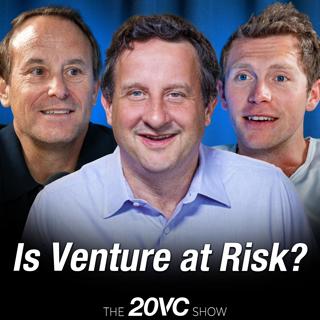
20VC: Benchmark vs a16z: Why Stage Specific Firms Win | Windsurf Sells For $3BN | Decagon Raises at 100x ARR | Do Mega Funds Win the Future of VC | What Does Harvard's Losing Their For-Profit Status Mean for VC
Today's Topics: 04:44 Analysis of $3 Billion Windsurf Acquisition 12:39 Will Mega Funds Win the Future of Venture Capital 18:39 Does Every Fund Have to do Pre-Seed to Win Series A and B Today 27:53 Why AI Will Create Massive Unemployment 31:06 The $100,000 Bet on the Future of Work 35:52 Why Venture Has Become a Bundled Good 37:52 Why Stage Specific Firms Will Win: a16z vs Benchmark 40:16 What Does Harvard Losing It's For Profit Status Mean for Venture 42:57 Why AI is Maiming and Not Killing Growth Companies on the Path to IPO 45:41 Decagon Raises 100x ARR: The Breakdown 52:50 Why VCs Are Upside Junkies and What That Means Today 01:03:37 Olo Looking to Sell: What Happens When Public Companies Want to Sell Please read the offering circular and related risks at invest.modemobile.com. This is a paid advertisement for Mode Mobile's Regulation A+ Offering. Past performance is no guarantee of future results. Investing in private company securities is not suitable for all investors because it is highly speculative and involves a high degree of risk. It should only be considered a long-term investment. You must be prepared to withstand a total loss of your investment. Private company securities are also highly illiquid, and there is no guarantee that a market will develop for such securities. DealMaker Securities LLC, a registered broker-dealer, and member of FINRA | SIPC, located at 105 Maxess Road, Suite 124, Melville, NY 11747, is the Intermediary for this offering and is not an affiliate of or connected with the Issuer. Please check our background on FINRA's BrokerCheck.
7 Mai 1h 11min

20VC Exclusive: Why Mega Platforms Will Win in VC | Why You Cannot Do VC If You Do Not Do Pre-Seed | Why Market Sizing is BS | Where Will Foundation Models Build/Buy Apps vs Where Will They Not with Bucky Moore
Bucky Moore is a Partner @ Lightspeed Venture Partners, announced exclusively in the show today on 20VC. Prior to Lightspeed, Bucky spent an incredibly successful 7 years at Kleiner Perkins working with Mamoon Hamid to build one of the most successful early stage firms of the last decade. Bucky has made investments in the likes of Prisma, Netlify, Browserbase and more. In Today's Episode We Discuss: 03:07 Big News: Joining Lightspeed Venture Partners 04:09 Why Mega Platforms Will Win the Next 10 Years of VC 09:33 Are Foundation Model Companies Good Venture Investments 16:04 What Applications Will Model Providers Buy/Build? What Will They Not? 22:03 How to Approach Price Sensitivity in a World of AI 28:25 Why is it BS to do Market Sizing When Making Investments in AI 34:03 Is the Future of VC Domain Specialization 38:38 How to Know What Company Wins in Super Competitive Markets 41:06 Why Every Firm Has to do Pre-Seed To Win in VC Today? 44:43 The Risks of Multi-Stage Investing: Is Signalling Risk Real? 48:53 Investing Lessons from Leading Rounds in Glean and Windsurf 56:54 Quick Fire Round: Lessons from Mamoon, Fave CEO, Next 10 Years
5 Mai 1h 5min

20Sales: Sierra: Inside Silicon Valley's Fastest Growing Sales Machine & How to Prospect, Outbound and Close Enterprise Deals in AI
Reggie Marable is the Head of Global Sales at Sierra, a conversational AI platform for businesses. Sierra enables companies like ADT, Sonos, SiriusXM, and WeightWatchers to build AI agents that transform customer experiences. The company has rapidly become a hypergrowth leader in Silicon Valley, recently securing a funding round that values it at $4.5 billion. Before joining Sierra, Reggie was the Head of Sales in North America at Slack and the Area Vice President of Enterprise Sales at Salesforce. In Today's Episode We Discuss: 02:50 "What I Learned from Failing Early as a CRO" 06:06 The Most Effective Sales Strategy and the BS Sales Methodology 06:55 How to Build Sales Processes from Scratch 12:28 When and How to do Verticalised Sales Teams 14:15 How to Become World Class as Sales Prospecting and Outbound 17:21 How to Use Proof of Concepts to Win Enterprise Deals 22:04 Enterprise vs. Self-Serve: Both or One and How 30:09 Building a Sales Team from Scratch 37:39 Structuring the Hiring Process 41:14 How Founders F*** Up Hiring in Sales 46:25 Handling Salary and Title Expectations 51:36 How to Run Effective Deal Cycles 57:06:07 How to do Onboarding for New Sales Hires 59:07:48 How to do Post Mortems in Sales Processes 01:04:24 Negotiating Enterprise Deals 01:08:04 Quick Fire Round: Sales Tactics and Strategies This episode is brought to you by Capchase, helping software and hardware companies close deals while accessing TCV upfront. Learn more at capchase.com/20vc.
2 Mai 1h 7min
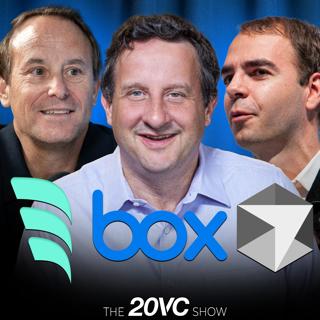
20VC: Why Fund Returners Are Not Enough Anymore | Why Sequoia Had the Best Strategy at the Worst Time | What it Takes to Be Good at Series A and B Today | Benchmark Leads Manus Round: Should US Funds Invest in Chinese AI
In Today's Episode We Discuss: 03:56 Why The Risk Lever Has Been Turned Higher than Ever in VC 06:04 Why IRR is the Hardest Thing to Control 09:36 Is Lack of Liquidity Short Term Temporary or Long Term Structural 12:17 Why Fund Returners Are Not Good Enough Anymore 16:03 Sequoia: The Best Strategy at the Worst Time 26:30 What it Takes to be Good at Series A and B Today 34:14 Only Three Company Types Survive AI 41:35 ServiceNow: 25% Pop, WTF Happened 45:29 Palantir and SAP Ripping: Do Incumbents Win AI 49:43 Are Benchmark Wrong to Invest in Chinese Made Manus 01:00:52 Geopolitical Risks in Investments 01:11:36 European vs. US Tech Culture
1 Mai 1h 24min
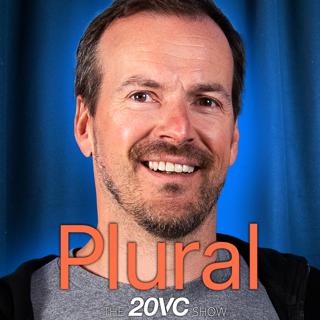
20VC: VCs are Spreadsheet Monkeys and are Commoditised | Why Fees and Carry Misalign GPs and LPs | Why Founders Will Realise Multi-Stage Funds Damage Seed Rounds | Why We Need European Sovereignty More Than Ever with Taavet Hinrikus
Taavet Hinrikus is a Partner at Plural, the early-stage fund that backs the most ambitious founders on a mission to change the world through technology. He co-founded Wise in 2010, where he was CEO and later Chairman, which went public in the first-ever direct listing in Europe in 2021. Prior to that, Taavet was Skype's Director of Strategy until 2008, having joined as its first employee. He's been an active investor for more than a decade,with personal investments in the likes of Bolt and Synthesia. In Today's Show We Discuss: 04:08 VCs are Spreadsheet Monkeys 05:41 Why Banker European VCs Suck More Than The Others 11:20 Why Serial Entrepreneurs Are Better 14:48 Why the 2:20 Fee and Carry Model in VC is Broken 18:01 What are the Biggest Ways VC Investment Decision-Making is Broken 28:26 Why is it BS when VC Firms Need Every Partner to Meet the Founder 31:24 When and Why Will Founders Realise Multi-Stage Firms are Bad Early Investors 34:35 Why Does Europe Need to Build it's Own Tech Now More Than Ever 37:24 Will Putin Invade More European Countries 39:29 What are the Dangers of Having US Made Tech in Europe 47:12 How Does the Change in Relationship Between the US and Europe Impact How We Build Our Tech Ecosystem? 52:36 Quick Fire Questions and Reflections
28 Apr 58min
